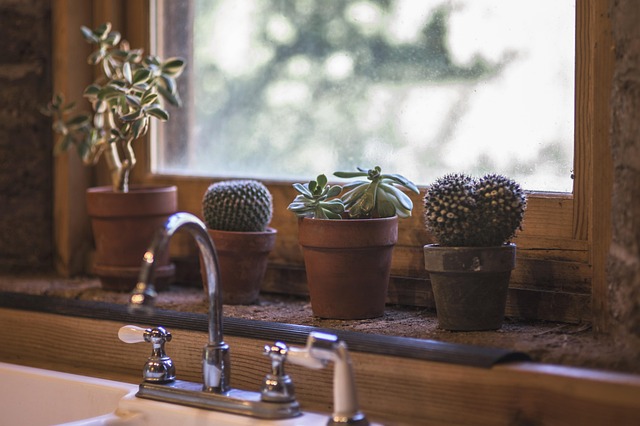Lighting choices significantly impact household energy consumption and environmental sustainability. Modern solutions like LED bulbs offer energy efficiency, reducing electricity bills and carbon footprints. Integrating natural light through daylighting strategies further enhances energy conservation, while smart home automation allows for customized lighting controls, optimizing energy usage in eco-friendly homes. Adopting sustainable home improvements, focusing on lighting, is a simple yet effective step towards cost savings and environmental preservation.
Modern homes are looking towards sustainable lighting solutions not only for their aesthetic appeal but also for significant energy savings. Understanding how lighting impacts energy consumption is the first step towards a greener future. This article delves into eco-friendly light bulb options, led by the LED revolution, and explores daylighting strategies to harness natural light effectively. We also discuss smart home automation as a key enabler for optimizing lighting and enhancing sustainable home improvements.
Understanding the Impact of Lighting on Energy Consumption
Lighting plays a significant role in a household’s energy consumption, making it an essential aspect to consider when implementing sustainable home improvements. Traditional lighting options contribute to high energy bills and environmental impact due to their reliance on non-renewable energy sources. Understanding this impact is crucial for homeowners aiming to make their homes more eco-friendly.
Modern sustainable lighting solutions offer a greener alternative by harnessing energy-efficient technologies. LED (Light Emitting Diode) bulbs, for instance, consume significantly less electricity than incandescent bulbs while emitting the same amount of light. This simple switch can lead to substantial savings on energy costs over time. Additionally, smart home integration allows for precise control and scheduling of lighting, further enhancing energy conservation efforts in the pursuit of a more sustainable lifestyle.
Exploring Eco-Friendly Light Bulb Options: LED Revolution
In the pursuit of sustainable home improvements, one of the simplest yet most impactful changes is adopting eco-friendly light bulb options. The LED revolution has transformed the lighting industry, offering a bright future for energy-efficient homes. These bulbs have evolved from their early counterparts, now providing crisp, white light comparable to traditional incandescent bulbs while consuming significantly less power. By choosing LED lights, homeowners contribute to reducing their carbon footprint and saving on electricity bills.
The environmental benefits extend beyond energy conservation. Unlike conventional bulbs that contain harmful materials like mercury, LEDs are designed with eco-consciousness in mind, minimizing waste and ensuring safer disposal. With longer lifespans compared to incandescent and fluorescent alternatives, LED bulbs reduce the frequency of replacements, further lowering both environmental and financial impact. This shift towards sustainable lighting solutions is a significant step in creating more environmentally friendly and cost-effective modern homes.
Integrating Natural Light: Daylighting Strategies for Modern Homes
Integrating natural light is a key strategy in modern homes aiming for sustainable lighting solutions and energy efficiency. Daylighting, or the use of sunlight to illuminate interior spaces during the day, offers numerous benefits. It not only reduces reliance on artificial lighting but also contributes to a healthier living environment by regulating circadian rhythms and enhancing overall well-being.
Effective daylighting strategies involve carefully designed windows, skylights, light shelves, and reflective surfaces. These elements work together to maximize sunlight penetration deep into rooms, ensuring spaces are naturally illuminated throughout the day. Such practices not only enhance the aesthetics of a home but also provide cost savings by minimizing electricity consumption for lighting, making it an attractive option for those seeking sustainable home improvements.
Smart Home Automation: Optimizing Lighting for Sustainability
Smart Home Automation plays a pivotal role in achieving sustainability goals for modern homes. By integrating lighting systems with advanced automation, homeowners can optimize energy usage and reduce their environmental footprint. These systems allow for precise control over lighting, enabling adjustments based on occupancy, time of day, and natural light availability. For instance, automated dimmers and switches can turn lights off when a room is unoccupied or adjust brightness according to the amount of sunlight entering the space.
This technology extends beyond individual controls, offering whole-home automation where lighting scenarios can be programmed for different times of the day or night. This not only conserves energy but also enhances user experience by creating customized ambient lighting. As part of broader sustainable home improvements, smart lighting automation contributes to a more efficient and eco-friendly living environment.
Modern homes can significantly reduce their energy footprint and contribute to a more sustainable future by adopting various eco-friendly lighting solutions. From energy-efficient LED bulbs to smart home automation, each strategy presented in this article offers a step towards greener living. By understanding the impact of lighting on energy consumption and implementing these sustainable practices, homeowners can embrace a new era of environmentally conscious living while also enjoying the benefits of well-designed, efficient spaces. These sustainable home improvements not only save costs but also ensure a brighter, more responsible future for generations to come.
